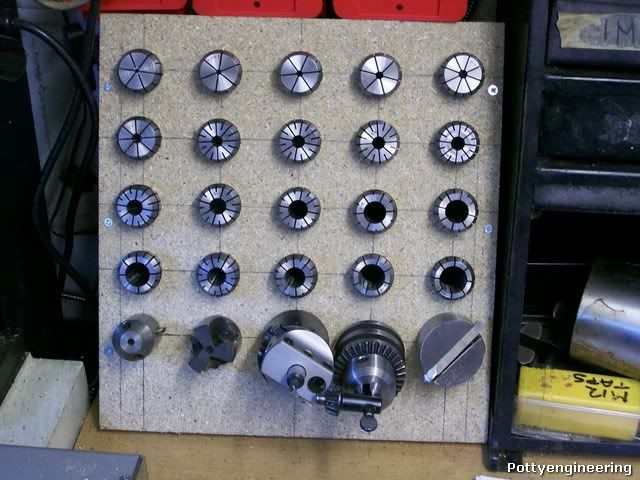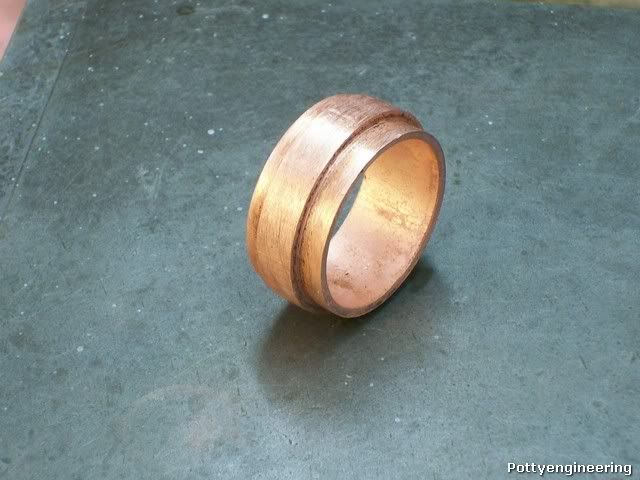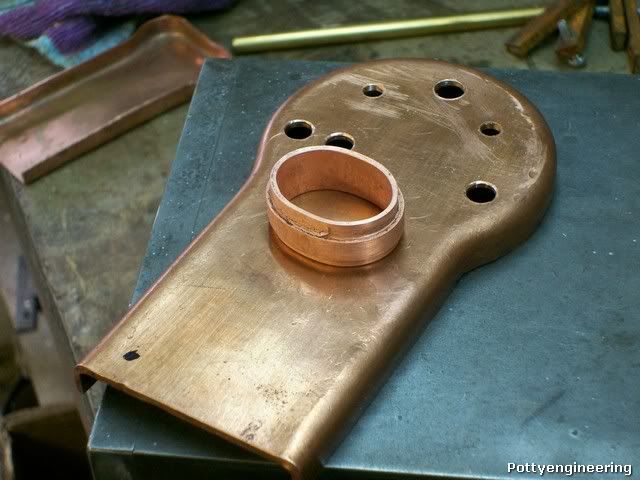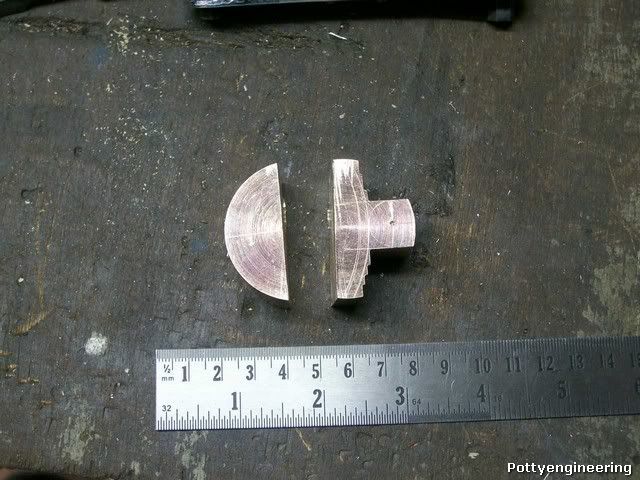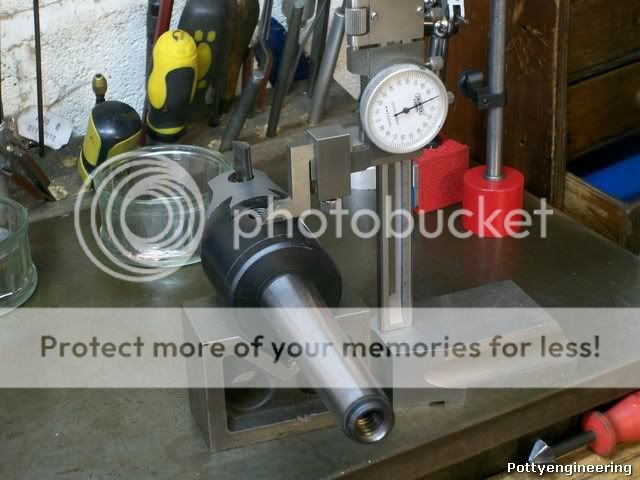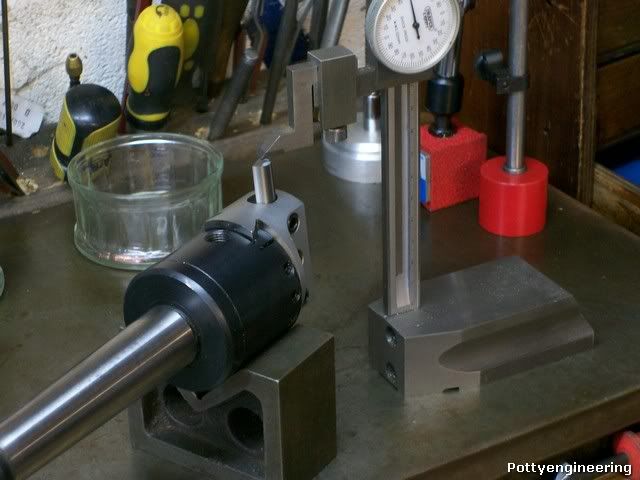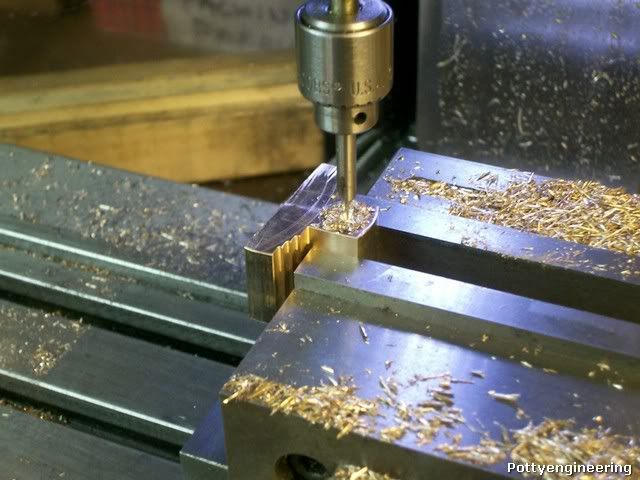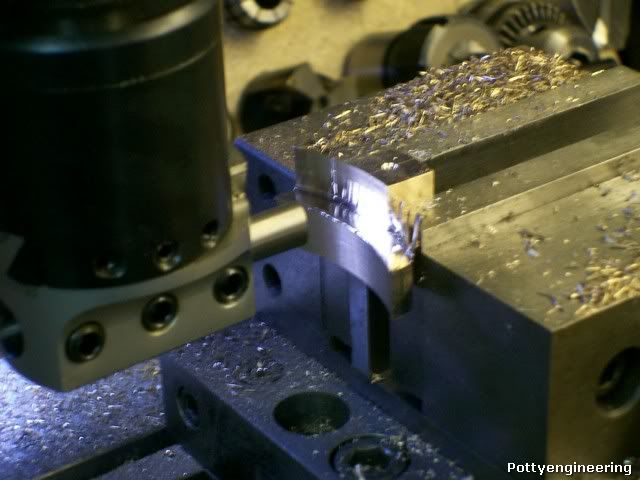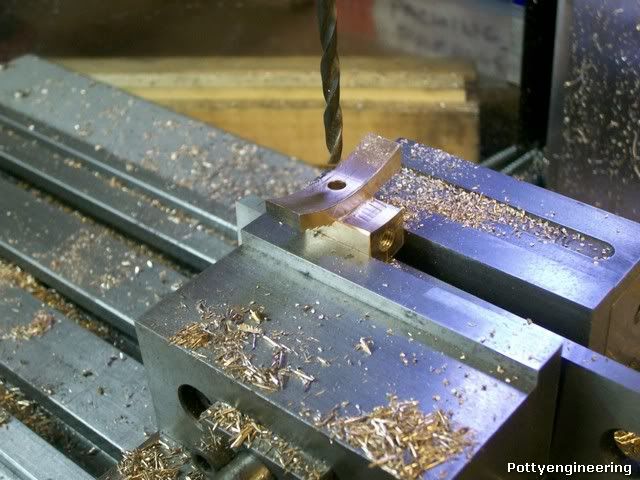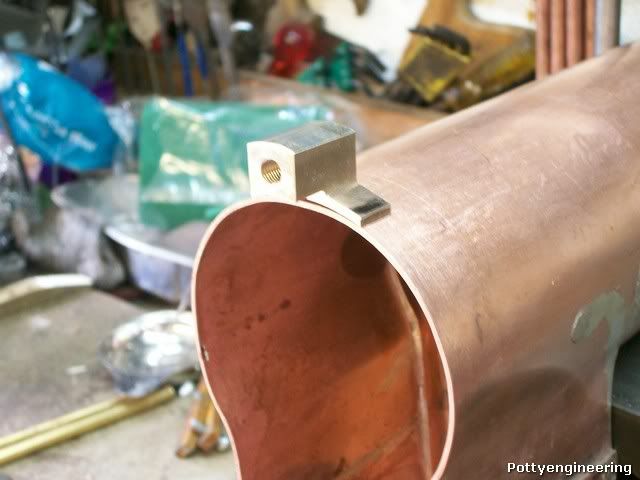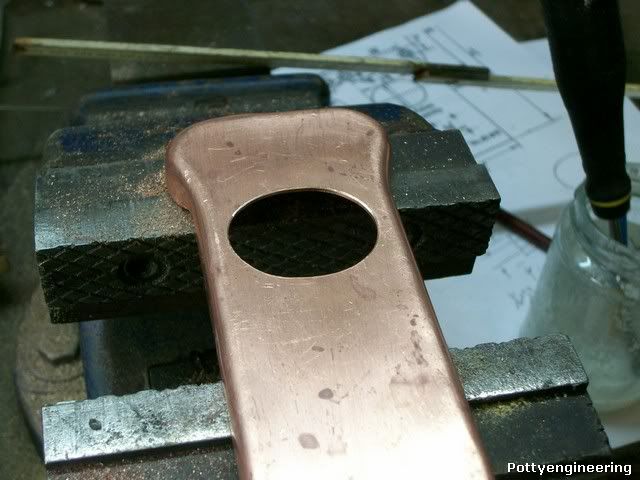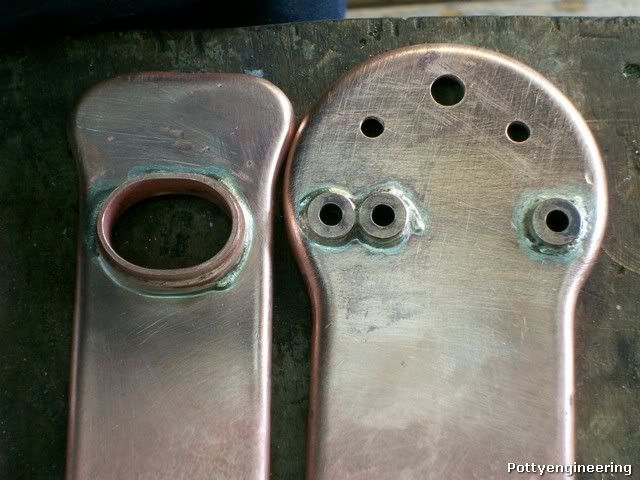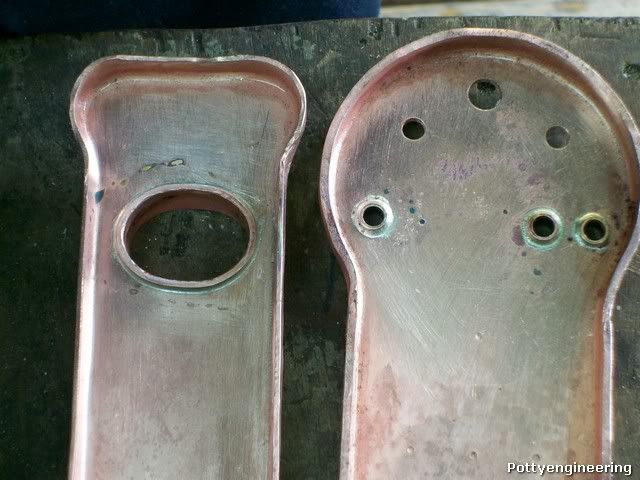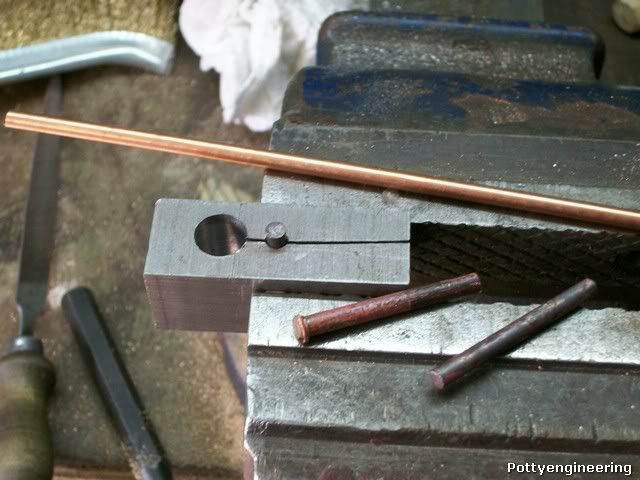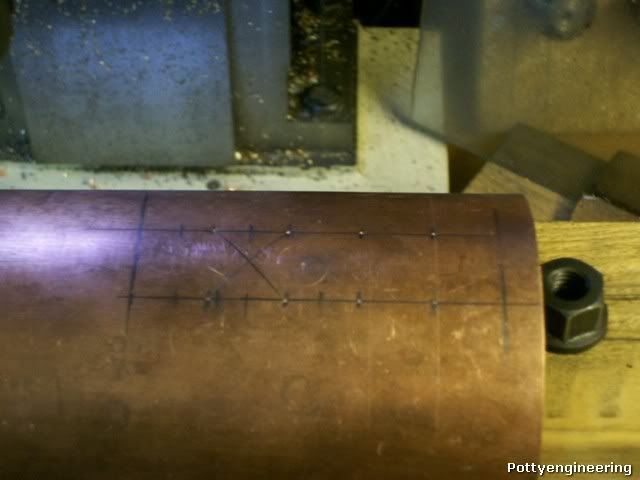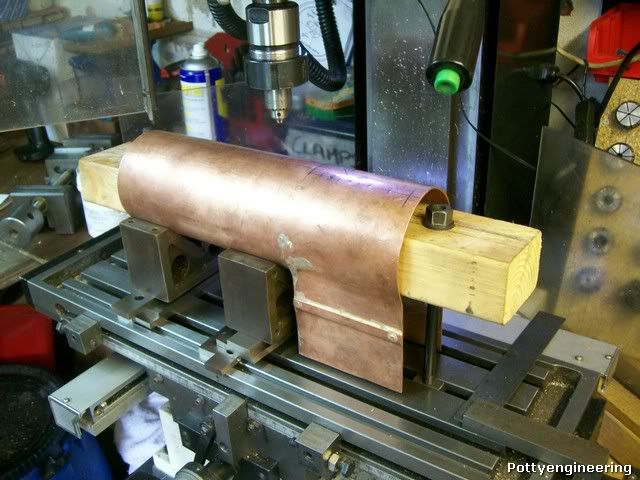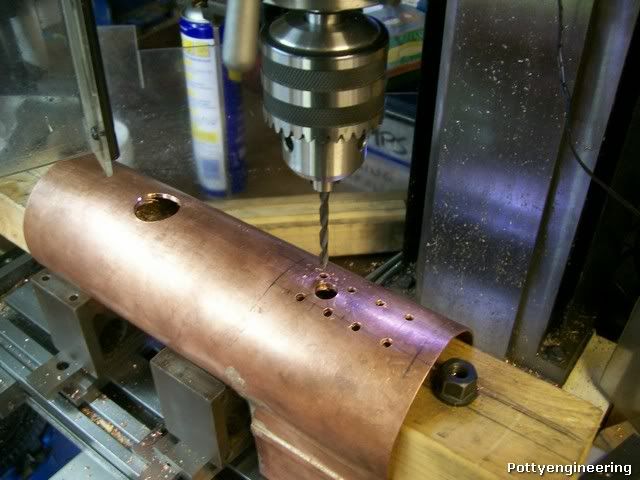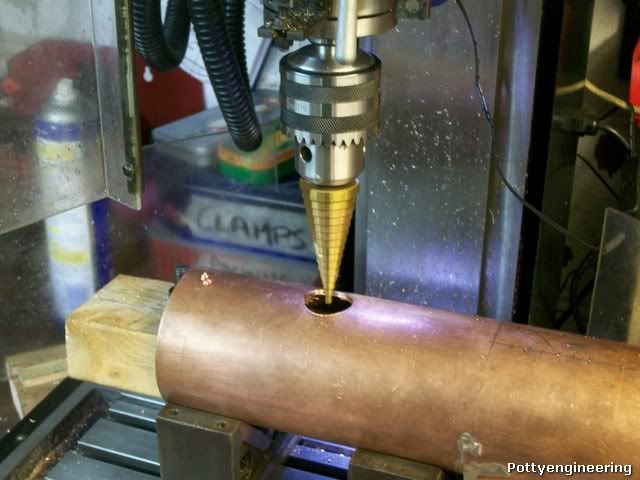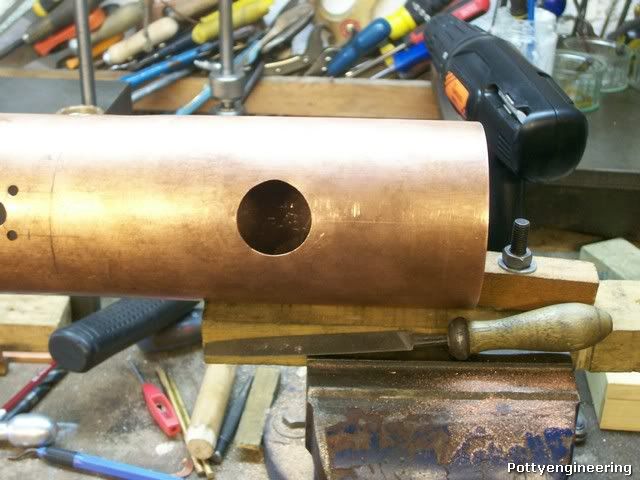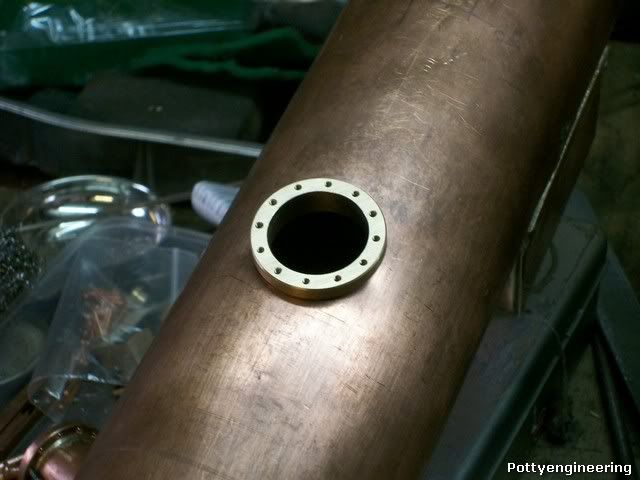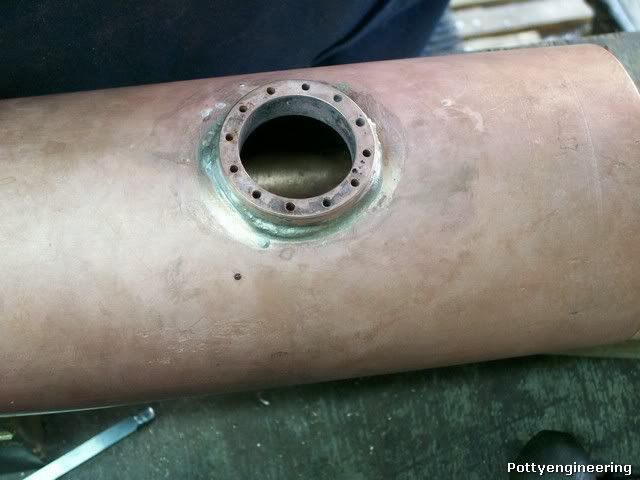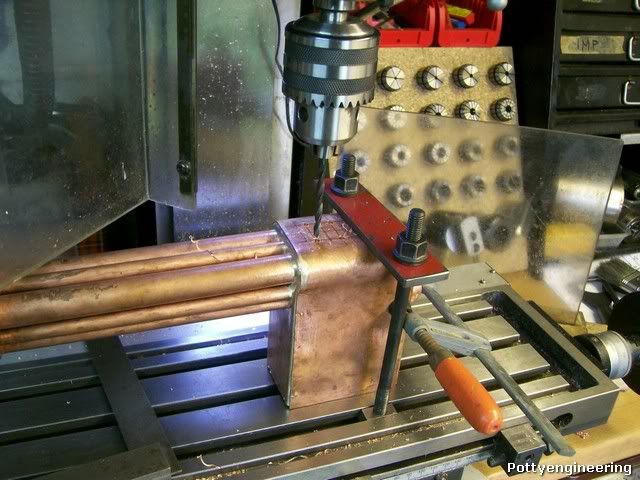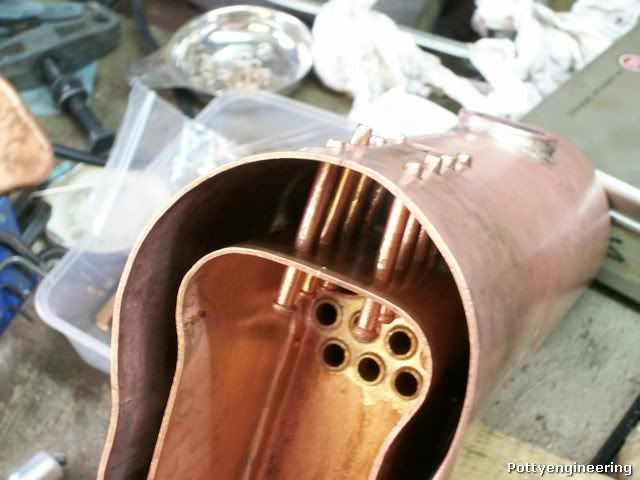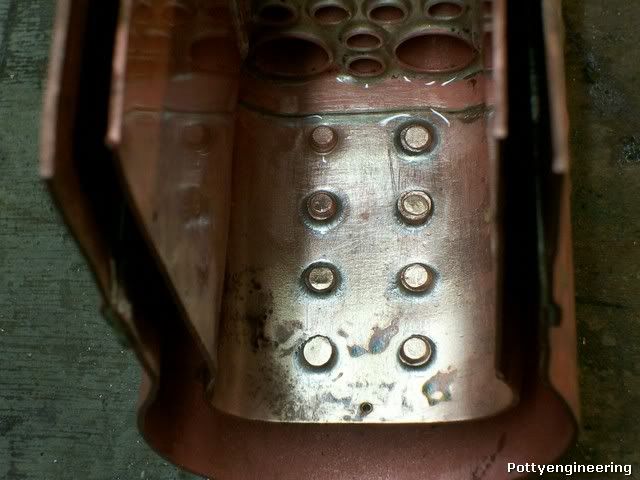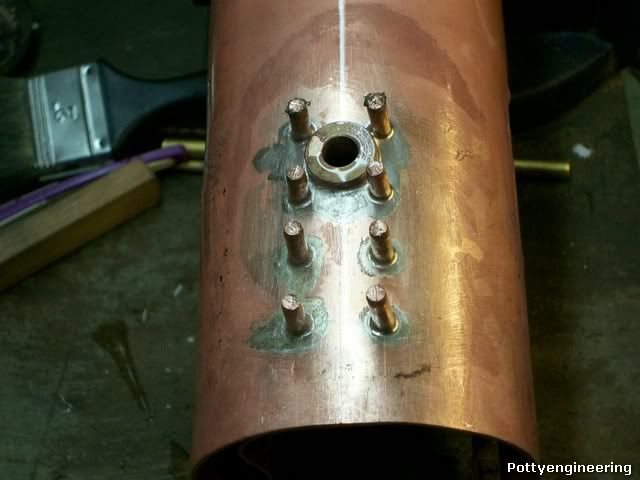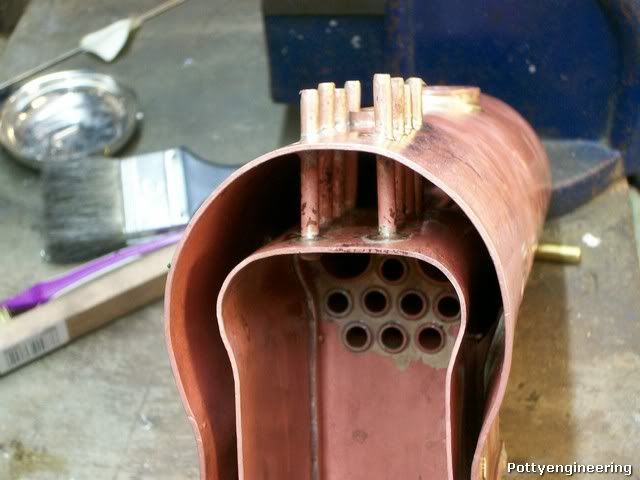I like that idea Stuart.
Well the soldering is on the back burner (pun)

until I gat the work done so far, checked out by the boiler inspector. So did a bit of shop maintainance.
Nocked this tooling rack up,
This frees up some space which in my small shop is at a premium.
Then did one or two machining jobs for the boiler first up the "Fire Hole" no not the sort you get after a night down the pub and a curry, the sort they shuvel the coal through.
Its made from a bit of thick wall copper tube:- a short step turned on each end so that you've got a 1/4" collar, a quick anneal and a soak in the pickle.
Then a squeeze in the vice to make it oval and here it is on the backhead.
Next up the bush for the water gauge, for some reason there is no dimensioned drawing for it, just a note saying 1/4* 32 thread. So this is my interpretation of what's required.
Using a chunk of Phos Bronze mark it out and rough it out.
This is one of those awkward jobs where if you don't machine it out in the correct order you'll end up not being able to grip it to finish the job.
Then as its got to fit on the 3 1/2 " dia boiler tube, set up the boring head to cut that dia. The body of the head is 50 mm so (88.9 - 50) / 2 = 19.5 thats what the tool has to stand out above the body to cut a 3 1/2 " dia.
With that set, pop the job in the vice, centre drill for the 1/4*32 zero up the DRO swap to the boring head and cut the rad.
Then back to the zero position and drill for the thread.
Flip it round and drill the joining hole.
A clean up with a file and this is it on the boiler tube.
Stew





